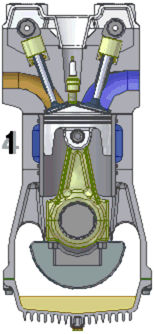Hi, I'm sure everyone has noticed in LFS when the engine is revving down, the throttle (green bar) disappears completely. But is that really accurate? I like to watch cars on the roads, and when I look at their exhausts, there is always smoke coming out, whether they are accelerating or decelerating. Always. Doesn't this mean that there is always a minimum amount of throttle applied? I was wondering if anyone can shed some light on this.
One more thing...when you run out of gas in LFS, and your engine is still revving, and you press the gas, the sound gets louder as if you are really giving it gas, even though you're not. Just thought I'd mention it.
One more thing...when you run out of gas in LFS, and your engine is still revving, and you press the gas, the sound gets louder as if you are really giving it gas, even though you're not. Just thought I'd mention it.



